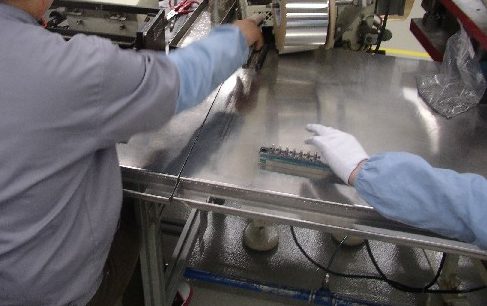 |
 |
| Long reach from excessively large work surface | Large work surfaces attract clutter |
Principles affected
Related pages
Workstations:
Background
An extremely common issue is an unnecessarily large work surface. This observation is not intuitive, since we tend to think: the larger the surface the better. Indeed, we view worksurface size as a status symbol, at least in the office.
However, large surfaces can actually interfere with production and generate difficulties for employees:
- Oversized dimensions can create long reaches.
- The available area provides a temptation to store tools and materials haphazardly, which in turn can waste time and create unnecessary motions to hunt for needed items.
- In some cases, the traditional flat horizontal surface does not provide the best orientation for the work, causing employees to work with a continuously bent neck and, in turn, neck pain.
- Large work surfaces can tempt production personnel to use the space as informal storage “just in case.” Thus, the workstations can create excessive Work-in-Process (WIP) and unnecessary buffers, defeating efforts to streamline flow and inventory.
Surprisingly often, a surface per se is not needed at all — there are more effective ways to provide the functions needed at a given workstation. A common side benefit is reduction in congestion and increased floor space.
Objectives
Minimize reaches and motions by designing workstations with minimally sized work surfaces.
Ideas and Options
Minimize surface dimensions
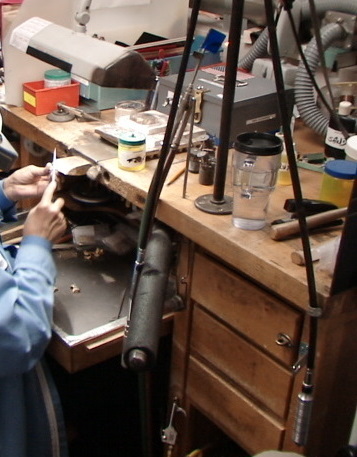 |
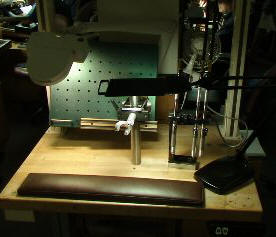 |
| Before: Work surface large and inconvenient | After: Smaller, more functional work surface |
The example shows a new design for a series of workbenches that were so large and inconvenient that they were basically nonfunctional and used only for random storage of seldom-used items. Once the surface was reduced and other changes made, the bench became more usable.
Careful evaluations of typical light manufacturing tasks show that generally only a small portion of a workbench is actually needed for work, often less than one square foot. The remaining surface is usually used for associated equipment and materials that could more conveniently be placed on vertical racks and supports rather than spread out horizontally. Consequently, large workbenches are often not needed.
Workstation dimensions should be based on the nature of the task and the item being worked on. It should not be assumed that large surfaces are better. Suppliers of workbench equipment usually offer various sizes, including small surfaces. Otherwise, the surfaces can be custom fabricated rather easily.
Eliminate the surface
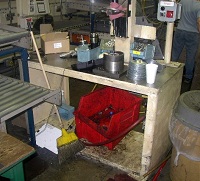 |
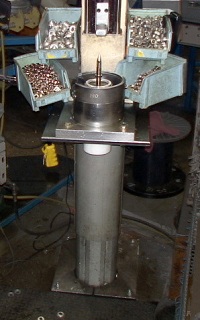 |
| Before | After |
Some workstations need no work surface. The photos above show a standard workbench that was replaced with a pedestal workstation. The initial evaluation revealed that the standard bench led to long reaches, congestion, and cluttered storage. These factors in turn wasted time, created rework, and contributed to shoulder problems. Further study showed that a work surface was not needed, further reducing the footprint of the workstation.
A number of other examples in this knowledge base show workstations without an actual work surface, for example: Pedestal workstation and Electronics workstation. See also free-standing fixtures and bench fixtures.
Temporary additional space
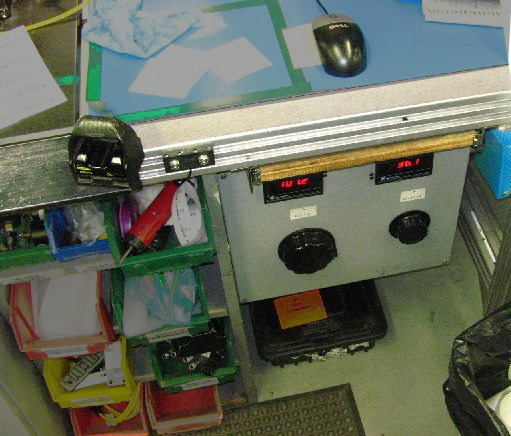 |
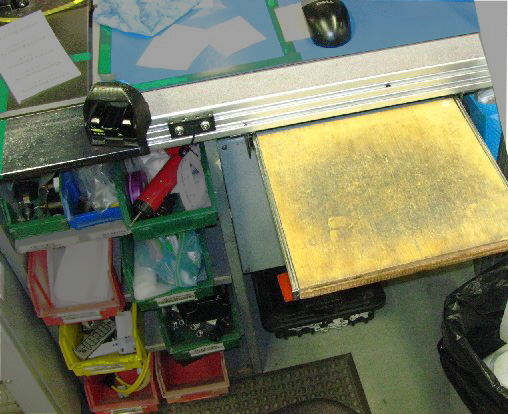 |
| Pullout “breadboard” built into workstation | |
If extra space is occasionally needed, there are several inexpensive concepts that can be used. One is building a pull out board, an age-old technique used in kitchens.
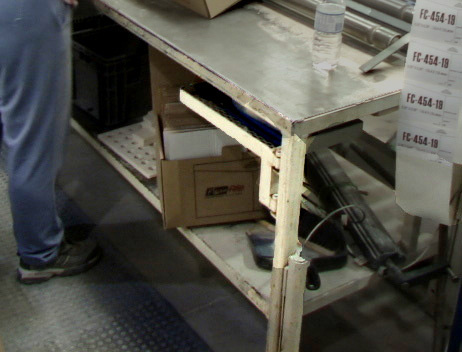 |
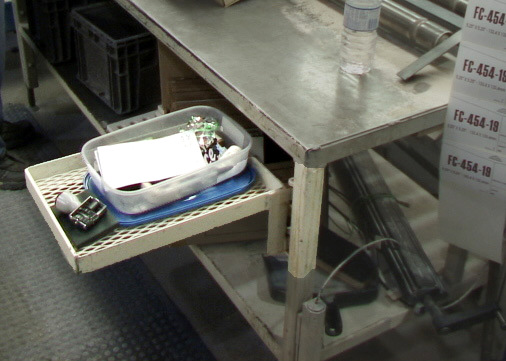 |
| Swing out surface | |
These photos show a different variant, that of a swing out surface.
 |
 |
| Drop leaf | Keyboard tray refitted with larger steel surface |
Drop leaf tables can also be used for temporary additional surface space. Brackets and hardware for breadboards and drop leafs are available in hardware stores and kitchen supply outlets. Computer keyboard trays provide an additional option.
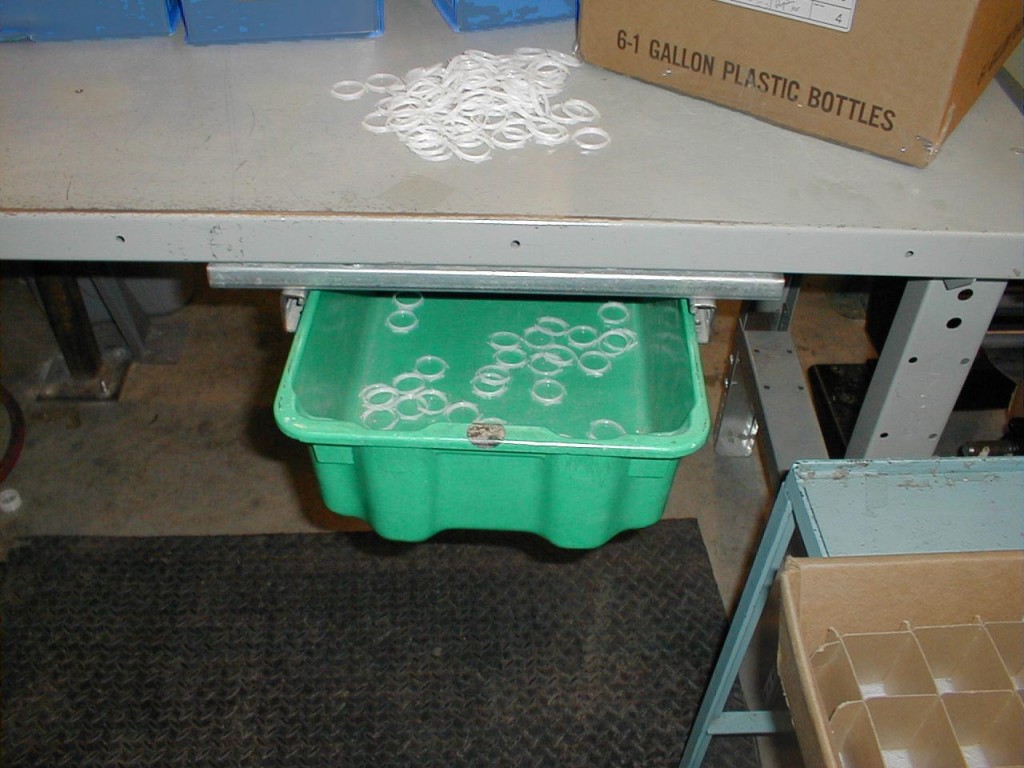
Slide out tote
Any number of slide out surfaces are possible.
Mobile surfaces
| [need photo] |
| Small surface on casters |
A mobile surface has advantages, such as this small desk on casters.
| [need photo] |
| Lecture hall drop down desks |
Drop down desks like those used in lecture halls might also be used.
Cutouts
 |
 |
| Round cutout | Straight edge cutout (easier to make) |
If there is a need to have a large surface area, a different approach is to make a cutout into the work surface.
Common pitfall: The primary purpose of the cutout is to reduce the forward reach. If parts are handled to and from the side (i.e. another person side by side), then it can result in excessive twisting. In all events, a good swivel chair is required.
